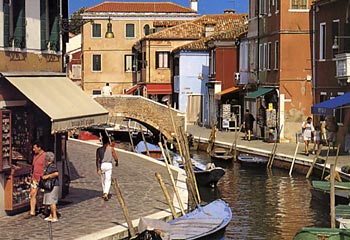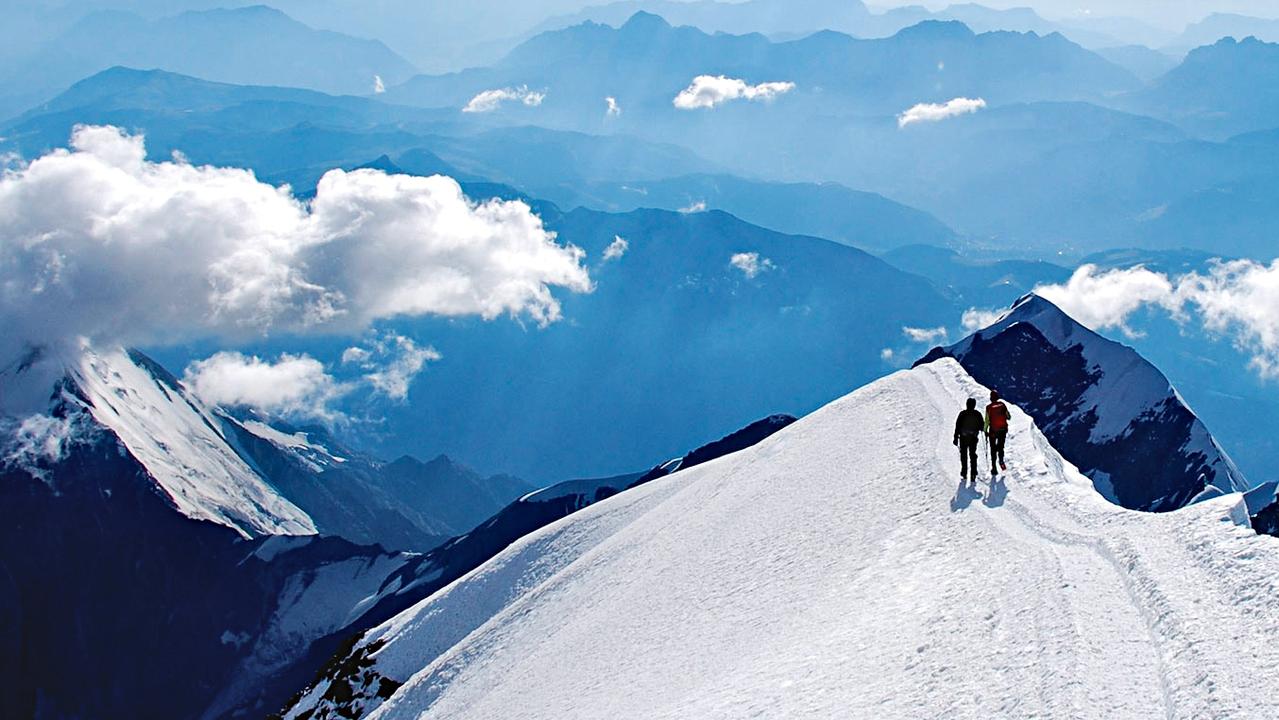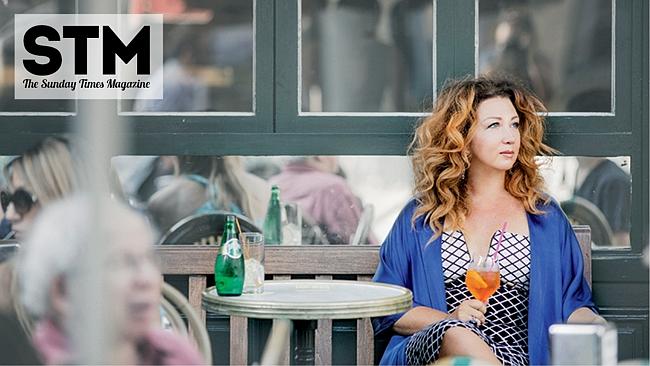Venice so good for the sole
VENICE has many kilometres of pavements and alleys which means that the best way to explore the secrets and beauties of Venice is to set out on foot.

THERE are only three essential items to pack for a trip to Venice: a robust credit card, the love of your life and a comfy pair of walking shoes.
Thanks to the skills of centuries of stonemasons, Venice is a city made for strolling, so forget the vastly overpriced gondolas and rely on your feet instead.
It's possible to spend a week in this magnificent city and, apart from airport transfers, never have to take a public vaporetto water bus, a traghetto (a commuter gondola with standing room only), a gondola or a private mahogany water taxi. What's more, walking doesn't cost anything, and in a city where $10 for a coffee is a bargain and a gondola ride can be as much as $150 (more after dark), anything free is good.
The city has many kilometres of pavements and alleys that follow the canals, the connecting rivers and the shorelines of the lagoon. They wind between brick buildings and baroque churches, rise up and over delicate stone-arch bridges, and open out dramatically into brilliant, sunlit squares.
At dawn they are the domain of industrious merchants who sweep the patches outside their shops and polish their windows to show off Murano glass chandeliers, carnival masks or hand-woven leather-bound notebooks.
At peak hour the flagstones echo with the clicking heels of a few thousand immaculately dressed Venetians making their fashionable way to work. And after dinner they are full of families taking an evening stroll, the children eagerly coaxing their parents into pasticcerie to buy cakes and sweet biscuits. In many ways these walkways, and not the canals, symbolise the real Venice. After all, the water was always here, long before the city was built on stilts sunk into the shallow lagoon marsh. These pavements and bridges are the true engineering marvels of the city.
You will need a good map with the small alleys marked on it and I recommend you get one before you fly so you can pre-plan your routes on the long-haul flight to Europe. You may want to focus different walks on the city's distinct neighbourhoods.
The northern district of Cannaregio harbours the Ghetto, the former island where Jews were confined after a decree in 1516. They were locked in at night behind gates and monitored by Christian guards. The Dorsoduro in the southern part of the city has two artistic gems: the Peggy Guggenheim Collection and the Accademia art gallery. The Arsenale, to the east, is considered by many to be the only genuine, non-commercial part of Venice; it's the working-class area that most tourists do not reach. Then there is Piazza San Marco (St Mark's Square) and the area around La Fenice theatre, two of the best-known central neighbourhoods.
The best way to experience Venice on foot, and certainly the most romantic, is simply to wander and get lost, then find your way home. That is when, purely by accident, you could come across hidden gondola workshops down side canals, meet and chat to Venetians walking their tiny dogs, and discover romantic cafes tucked away beside the walls of 16th-century palazzi.
That is when what looks like a blind alley suddenly turns a corner and terminates in a spectacular 180-degree view over a wide expanse of water.
The alleys may be crooked and look difficult to negotiate on a map, but signposts stencil-painted on to the walls and bridges are excellent, and the Venetians are courteous and helpful. But for those who would like a guiding hand, here are three suggested walks that I invented by getting lost.
ARTISTS AND ARTISANS, Dorsoduro
BEGIN on the wooden-stepped Ponte dell'Accademia (Accademia Bridge), which links the district of San Marco with the Dorsoduro, but save the gallery for another day as you'll need a few hours to make your way around and gaze at the Bellinis, Tintorettos and Canalettos hanging on the walls.
Instead, head down the Rio Terra Antonio Foscarini, left into Calle Nuova Santa Agnese and Piscina Forner, past the fish stalls and across the bridge over the Rio di San Vio. Keep heading east through the zigzag of alleys and past the Guggenheim (off Calle San Cristoforo) until you reach a covered passageway and a bridge at the end of Calle Abbazia.
In front of you stands one of Venice's finest baroque churches, Santa Maria della Salute, built at the end of the 17th century as Venice's way of thanking God for finally banishing the plague. If you are here on November 21, the religious holiday to celebrate the Feast of the Presentation of the Virgin, then you are in for a treat because the locals tie scores of boats together across the Grand Canal so people can walk over them to reach the church and worship.
From the church, make your way south to the Fondamenta delle Zattere Ai Saloni and walk west along the Canale della Giudecca waterfront (collectively known as the Zattere) to Fondamenta Nani, which will take you north again along Rio San Trovaso.
This area is famous for a couple of gondola workshops (known as squeri) so keep an eye out for craftsmen at work on the hulls of new models near the church of San Trovaso.
At Calle Corfu near the Grand Canal, take a right to get back to the Ponte dell'Accademia. From here, saunter into the giant Campo Santo Stefano and stop at a cafe for a well-deserved ice-cold Peroni beer.
SHOPPING TRAIL, San Marco
VENICE gets flooded in two ways: by water and by tourists. Despite the throngs and the pigeons, St Mark's Square is a must for the first-time visitor to Venice. It is magnificent in all seasons, even when you have to slosh around in a half-metre of murky lagoon water. Once you have marvelled at the splendours of the Basilica and the Palazzo Ducale (Doges' Palace), stand in the centre of the main square with the 98m-high bell tower (or Campanile) at your back and the wicker chairs and jazz band of Caffe Florian to your left.
Head west towards the archways near the entrance to the Museo Correr, through which you should be able to see sunlight and a further, smaller square. This is Calle dell'Ascension and it is the entrance to retail heaven. Turn right towards the Ermenegildo Zegna store, then left and left again into an alley called Frezzeria.
This narrow walkway has shops selling everything from puppets to carnival masks and elaborate writing sets, complete with ink pots and quill pens. If you head south and take a right into Salizzada San Moise, this route will bring you to Campo San Moise, a bridge over the Rio di San Moise and, finally, Calle Larga XXII Marzo (or March 22nd Street). The street was named in honour of Venetian loyalists who staged a famous but ultimately unsuccessful revolt against Austrian rule on or around this date in 1848.
Today it is more a homage to fashion than revolutionaries. Gucci, Prada, Ferragamo, Versace, Fendi and Valentino are the retail residents here, their ultra-modern window displays looking somewhat out of time amid the classical brick-and-stone facades.
This is also one of Venice's best people-watching streets, where the normally conservative Venetians can wear outrageous and experimental runway couture and still look good.
AFTER-SUPPER STROLL, Castello
THIS walk is designed for romantics and ideally should be taken after supper at the fabulous Ristorante Do Leoni at the Hotel Londra Palace on the Riva degli Schiavoni.
This is not Venice's most expensive or glitzy hotel but in my opinion is the most stylishly designed, the most impeccably run and the most welcoming of all. Its rooms have breathtaking views over the rooftops to the Campanile in St Mark's Square and straight out over the water to the terracotta edifice of the church of San Giorgio Maggiore. Russian composer Tchaikovsky was so moved by this latter panorama that he was inspired to write his Fourth Symphony from a desk in Room 106.
The restaurant is one of the best in town and serves some local dishes, including calves liver with onion, and scallops and fresh porcini. When you have dragged yourself away from the vin santo dessert wine at Do Leoni, head right (west) towards St Mark's but cut almost immediately right again, through a covered alleyway and into the charming Campo San Zaccaria, a small square; its eastern flank consists of an impressive church of the same name.
Head for the top left corner of the square, which will lead you to Campo San Provolo and into Campo San Filippo e Giacomo. Then head north along Calle Drio la Chiesa and left into Campo San Giovanni Nuovo. Head north along Calle di Franco alla Chiesa, which turns into Fondamente del Remedio, which will lead, via a few zigzags, to the huge church of Santa Maria Formosa and its adjacent square.
Behind the western end of the church, Calle delle Bande will lead to Campo San Zulian, from which take Merceria dell'Orologio and, hey presto, St Mark's Square again. You should just be in time for a late glass of grappa at Harry's Bar, then it is a five-minute stroll past the sleeping gondolas bobbing at their moorings back to Hotel Londra Palace.
Matthew Brace was a guest of Hotel Londra Palace.



